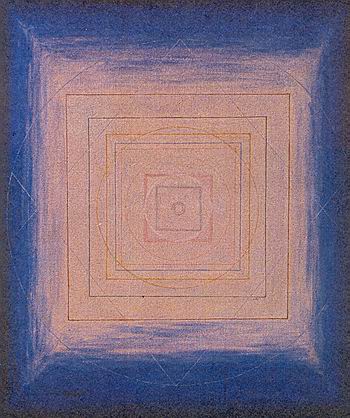The Aim of Life - An Overview
The Aim of Life
An Overview
In the course of the history of human endeavour, there have emerged four main theories of the aim of life in accordance with four different conceptions of truth of existence. These may be called the supracosmic, the cosmic and terrestrial, the supraterrestrial or other-worldly, and the integral or synthetic or composite. Human tendencies are complex and move often in various directions simultaneously. This explains why different aims of life are frequently pursued in some kind of ordered or disordered combination. Genuine integration or synthesis is rather rare.
I
The supracosmic view
In the supracosmic view of things the supreme Reality is alone entirely real. A certain illusoriness, a sense of the vanity of cosmic existence and individual being is normally a characteristic turn of this seeing of things. In the extreme forms of its world-vision, human existence has no real meaning; it is a mistake of the soul or a delirium, an error or ignorance.
It would follow that the one thing to be done, the one wise and needful way of our being is to renounce everything, whether terrestrial or celestial, as soon as our inner evolution or some hidden law of the spirit makes that possible.
The resultant call is to go beyond all manifestations and enter into some ineffable Nirvana or into the featureless unity of the indefinable Existence. And the path that is recommended is that of renunciation and rejection of physical life, the call of the spirit, the recoil from Matter.

II
The cosmic-terrestrial view
The cosmic-terrestrial view, the exact opposite of the supracosmic, considers cosmic existence as real; it goes farther and accepts it as the only reality. God, if God exists, is an eternal Becoming; or if God does not exist, then Nature is a perennial becoming. Earth is the field or it is one of the temporary fields; man is the highest possible form or only one of the temporary forms of the Becoming. Humanity and its welfare and progress during its persistence on earth provide the largest field and the natural limits for the terrestrial aim of life.


Ill
The supraterrestrial view
The supraterrestrial view admits the reality of the material cosmos and it accepts the temporary duration of earth and human life as the first fact we have to start from; but it adds to it a perception of other worlds or planes of existence which have an eternal or at least a more permanent duration.
There are three essential characteristics in all the varying statements of the supraterrestrial view: first, the belief in the individual immortality of the human spirit; secondly, the idea of its sojourn on earth as a temporary passage and of a heaven beyond as its proper habitation; thirdly, an emphasis on the development of the ethical and spiritual being as the means of ascension to heaven or supraterrestrial planes.
IV
The integral view
According to the integral view, there is the Divine Reality which manifests itself as the universe. The universe is a system of planes or worlds, supra-terrestrial and terrestrial. The earth-life is the scene of the evolutionary unfolding of the Divine Reality. There is an all-seeing purpose in the terrestrial creation; a divine plan is working itself out through contradictions and perplexities.
To discover the Divine Reality and to work for its full manifestation in physical life is the integral aim of life. All life must be accepted, but all life must be transformed by the highest divine light and power.

Related Books
- Alexander the Great
- Arguments for The Existence of God
- But it is done
- Catherine The Great
- Danton
- Episodes from Raghuvamsham of Kalidasa
- Gods and The World
- Homer and The Iliad - Sri Aurobindo and Ilion
- Indian Institute of Teacher Education
- Joan of Arc
- Lenin
- Leonardo Da Vinci
- Lincoln Idealist and Pragmatist
- Marie Sklodowska Curie
- Mystery and Excellence on The Human Body
- Nachiketas
- Nala and Damayanti
- Napoleon
- Parvati's Tapasya
- Science and Spirituality
- Socrates
- Sri Krishna in Brindavan
- Sri Rama
- Svapnavasavadattam
- Taittiriya Upanishad
- The Aim of Life
- The Crucifixion
- The Good Teacher and The Good Pupil
- The Power of Love
- The Siege of Troy
- Uniting Men - Jean Monnet